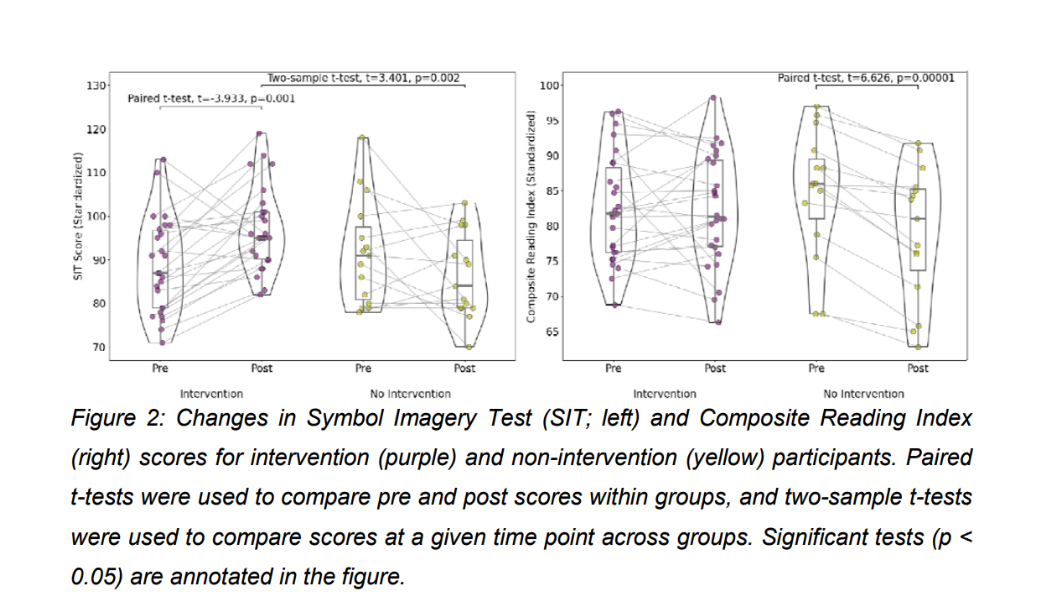White Matter Microstructural Plasticity Associated with Educational Intervention in Reading Disability
Steven L. Meisler, John D. E. Gabrieli, Joanna A. Christodoulou; White matter microstructural plasticity associated with educational intervention in reading disability. Imaging Neuroscience 2024; 2 1–18. doi: https://doi.org/10.1162/imag_a_00108
This study investigates the relationship between reading outcomes and white matter connections that facilitate communication between brain regions critical for proficient reading. Researchers collected reading scores and diffusion-weighted (white matter) images at the beginning and end of summer for 41 children with reading difficulties or disabilities who had completed either 1st or 2nd grade. Children were randomly assigned to receive an intensive reading intervention (n= 26; Lindamood-Bell’s Seeing Stars program, which emphasizes phonological and orthographic fluency) or assigned to a wait-list control group (n= 15). Researchers then analyzed how white matter properties varied across a broad spectrum of skill development and regression trajectories. On average, the intervention group had larger gains in reading than the non-intervention group, which declined in reading scores. The authors’ findings suggest that responses to intensive reading instruction are related predominantly to white matter plasticity in tracts most associated with reading. This study aligns with previous studies, such as those conducted at the University of Washington using the Seeing Stars program, which similarly highlighted the positive impact of reading interventions on white matter neuronal conductivity.






